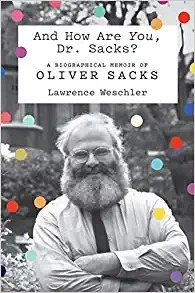Reading Level
What is the reading level of And How Are You, Dr. Sacks?: A Biographical Memoir of Oliver Sacks?
Analysing the books in the series, we estimate that the reading level of And How Are You, Dr. Sacks?: A Biographical Memoir of Oliver Sacks is 11th and 12th grade.
Expert Readability Tests for
And How Are You, Dr. Sacks?: A Biographical Memoir of Oliver Sacks
| Readability Test | Reading Level |
|---|---|
| Flesch Kincaid Scale | Grade 9 |
| SMOG Index | Grade 11 |
| Coleman Liau Index | Grade 9 |
| Dale Chall Readability Score | Grade 7 |
Reading Time
9 hrs 11 mins
How long to read And How Are You, Dr. Sacks?: A Biographical Memoir of Oliver Sacks?
The estimated word count of And How Are You, Dr. Sacks?: A Biographical Memoir of Oliver Sacks is 137,640 words.
A person reading at the average speed of 250 words/min, will finish the book in 9 hrs 11 mins. At a slower speed of 150 words/min, they will finish it in 15 hrs 18 mins. At a faster speed of 450 words/min, they will finish it in 5 hrs 6 mins.
| And How Are You, Dr. Sacks?: A Biographical Memoir of Oliver Sacks - 137,640 words | ||
|---|---|---|
| Reading Speed | Time to Read | |
| Slow | 150 words/min | 15 hrs 18 mins |
| Average | 250 words/min | 9 hrs 11 mins |
| Fast | 450 words/min | 5 hrs 6 mins |
- Authors
-
Lawrence Weschler
More about And How Are You, Dr. Sacks?: A Biographical Memoir of Oliver Sacks
137,640 words
Word Count
for And How Are You, Dr. Sacks?: A Biographical Memoir of Oliver Sacks
400 pages
Pages
14 hours and 48 minutes
Audiobook length
Description
The untold story of Dr. Oliver Sacks, his own most singular patient"[An] engrossing biographical memoir. This is Sacks at full blast: on endless ward rounds, observing his post-encephalitic patients . . . exulting over horseshoe crabs and chunks of Iceland spar." ―Barbara Kiser, NatureThe author Lawrence Weschler began spending time with Oliver Sacks in the early 1980s, when he set out to profile the neurologist for his own new employer, The New Yorker. Almost a decade earlier, Dr. Sacks had published his masterpiece Awakenings―the account of his long-dormant patients’ miraculous but troubling return to life in a Bronx hospital ward. But the book had hardly been an immediate success, and the rumpled clinician was still largely unknown. Over the ensuing four years, the two men worked closely together until, for wracking personal reasons, Sacks asked Weschler to abandon the profile, a request to which Weschler acceded. The two remained close friends, however, across the next thirty years and then, just as Sacks was dying, he urged Weschler to take up the project once again. This book is the result of that entreaty.Weschler sets Sacks’s brilliant table talk and extravagant personality in vivid relief, casting himself as a beanpole Sancho to Sacks’s capacious Quixote. We see Sacks rowing and ranting and caring deeply; composing the essays that would form The Man Who Mistook His Wife for a Hat; recalling his turbulent drug-fueled younger days; helping his patients and exhausting his friends; and waging intellectual war against a medical and scientific establishment that failed to address his greatest concern: the spontaneous specificity of the individual human soul. And all the while he is pouring out a stream of glorious, ribald, hilarious, and often profound conversation that establishes him as one of the great talkers of the age. Here is the definitive portrait of Sacks as our preeminent romantic scientist, a self-described “clinical ontologist” whose entire practice revolved around the single fundamental question he effectively asked each of his patients: How are you? Which is to say, How do you be? A question which Weschler, with this book, turns back on the good doctor himself.
